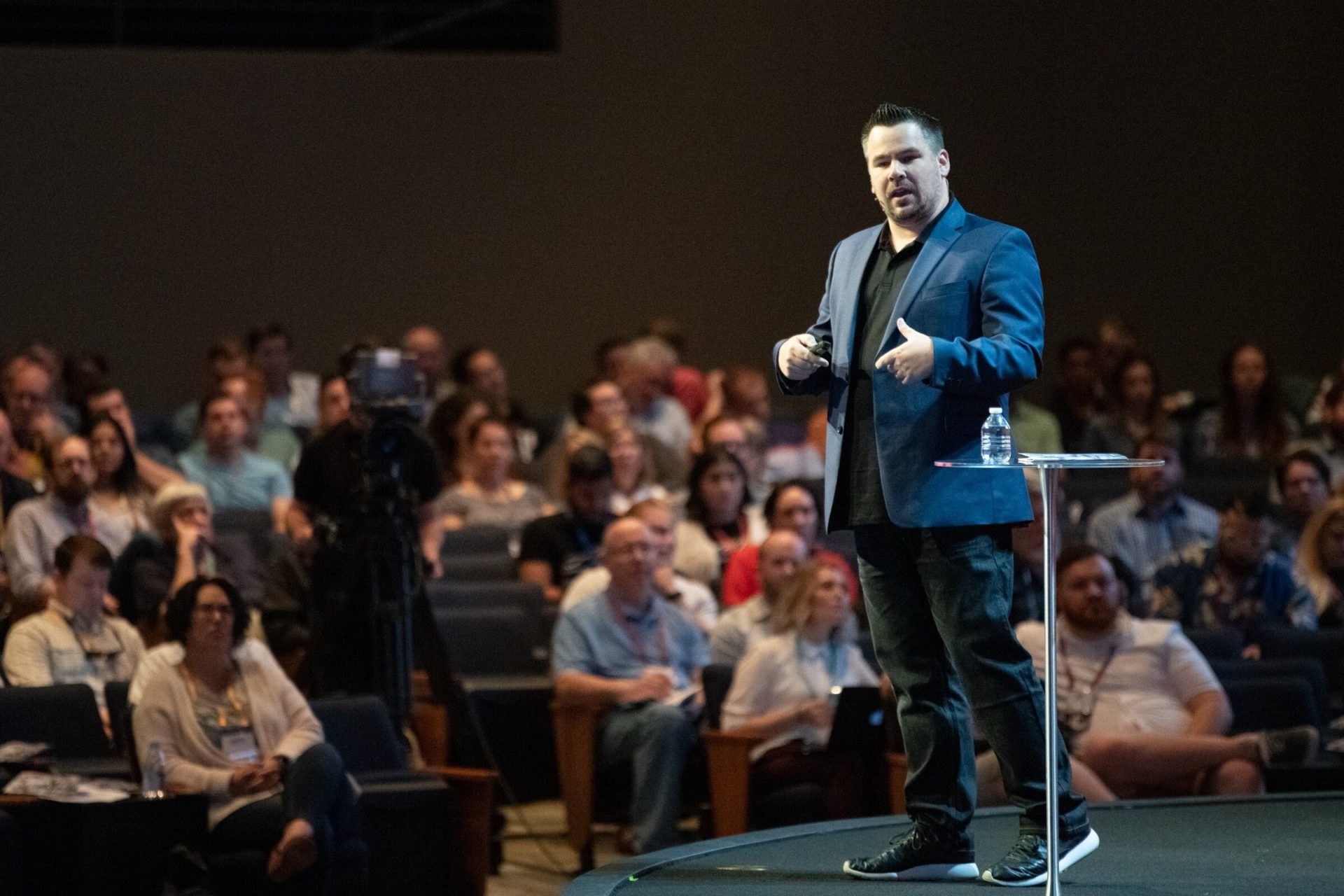
Is It Easy for People to Leave Your Church?
Discover how your ministry can beat church decline and low participation by nurturing your community and encouraging deeper enagegement with the local church.
At the 2019 Pushpay Summit conference in Dallas, over 1,100 church leaders nationwide gathered to learn from ministry and industry experts on how to solve their ministry’s hardest problems. The breakout sessions and keynotes weren’t just enlightening. They were deeply challenging, touching on topics like live-streaming services, multi-ethnicity in the Church, and preventing data breaches within ministries.
And one of those topics was teased apart by Pushpay Co-Founder, Chris Heaslip. Chris addressed the Nurture Gap and how churches can make it easier and more natural for people who made a commitment to follow Jesus to also commit to a local church.
Committing to your church…but only halfway
Churches nationwide are constantly working to help people take the first step to having a deeper relationship with Christ. But according to Chris, many churches are seeing people commit to Jesus, but not the local church. He calls this the Nurture Gap.
The Nurture Gap: The gap between the number of people who made a first-time decision to follow Jesus and the number of people who stayed with the church.
For example, let’s say 300 people at your church decided to follow Jesus in a month, but only 100 still attends in six months. What happened to the other 200? Maybe some got sick and had to work through that, maybe some moved to a new city, or maybe others got offended somehow and left.
What now?
Chris recommends taking a look at the business world for some practical insights. Brands nowadays are working hard to appeal to people’s desire for belonging and encouraging deep levels of commitment and loyalty that way. Whether it’s Gilette’s ad speaking out against toxic masculinity or Nike’s Colin Kaepernick ad, brands are rallying commitment from very specific groups by appealing to something they have in common.
They’re moving from individualistic marketing to community marketing. Now these brands can reach whole communities that are open to their message by tapping into people’s need to belong to something—in these cases, belonging to the group that cares deeply about the civil rights of African-American people and women.
Many of these companies now exist partly to further a social cause and are engaging people in an almost identical way to the Church. The thing is, the Church has a greater answer to people’s need for community. Yet, there’s the Nurture Gap between people committing to Christ and people staying within a local church.
There’s a disconnect.
Closing the Nurture Gap
So what are churches doing to address people’s need for belonging?
Most churches have an assimilation plan, but the truth is, it’s difficult to accurately determine what someone’s right next step is. Though the single goal of these plans is to increase participation, they suffer from a number of key issues:
- Churches are either too pushy or too afraid to ask people to do things because they don’t want to offend or pressure them. But that leads to low buy-in and low commitment.
“If someone is not taking a step to invest in anything in your church, it’s easy to leave.”
—Chris Heaslip, Co-Founder of Pushpay
On the other end of the spectrum, some churches ask for a lot very soon and turn people off.
- The second problem with assimilation plans is that churches use the same engagement scorecard for each and every member. So leaders are typically looking for five metrics to indicate that someone is fully engaged: They’re attending, serving, giving, sharing their faith, and attending a small group.
But what about people like Chris Heaslip whose jobs require them to travel constantly? They’re automatically marked as disengaged because they’re not in a small group, not attending regularly, and out of town too often to serve. This scorecard is unforgiving for members who are committed but may need a more flexible path to deeper engagement with the church.
- The third problem is that an assimilation plan doesn’t help churches recognize when people have left the ministry.
- And finally, most plans don’t account for more opportunities to care for people, simply because leaders don’t know what members are going through.
Nurturing increased commitment
Assimilation plans aren’t as effective as they used to be, especially with the newest generations of church-goers who want more from their churches and are holding their communities to a higher standard of excellence. They expect their ministries to reflect the level of attention and savvy they get from other organizations. They expect their churches to know when they’ve stopped being engaged and be direct in asking for what the church needs of them.
With the current model, people keep falling through the cracks. Ministries aren’t making it easy for people to stay—they’re unintentionally making it easy for people to leave.
Chris introduced a solution to the Nurture Gap: Nurturing the journey using a simple, four-step process that churches can use to increase participation from every person at every stage of their journey.
“The nurture journey is the process of caring for and encouraging the growth and development of someone.”
—Chris Heaslip, Co-Founder of Pushpay
The process starts with defining who you’re trying to reach and what next step you want them to take. Here’s what the Nurture process looks like…
Step 1
Known: We have to know who we’re trying to reach and they have to know we’re trying to reach them.
Step 2
Seen: People need to take a step out of anonymity so we can connect with them.
Step 3
Receive: We have to make an investment in people through activities, classes, and various offerings.
Step 4
Participate: We can then ask people to participate in the right next steps.
Most churches are already doing some version of this—which is fantastic. But there’s a lot of room for leaders to explore each stage more to help develop a stronger sense of belonging and commitment within their communities. Whether it’s getting a deeper understanding of who attends the church to more effectively asking them to participate in an upcoming event, there’s room for more intentionality.
At the end of the day, churches that don’t have the right next steps for people and present those steps at the right time make it easy for people to avoid investing in the church. These ministries make it easy for people to leave.
Someone who follows an intentional, well-thought-out nurture process is likely to not just stay after committing to Jesus for the first time, but likely to stay for a long period of time.
This is only the beginning
There are levels to this, and the content above is only the start. To learn more about how your church compares to other churches, take our engagement grader quiz, and download the free Nurture workbook, click here.
The first part of the Nurture framework is Known, and rightly so! Churches can’t reach people without knowing them and having a real way to connect with them. That’s why we wrote the Persona Worksheet. This powerful tool was designed to help churches of all sizes identify the different types of people in their communities and create a plan for best reaching these various groups. Click the button below the download your free copy and get started on creating a Nurture journey that makes sense for your unique ministry.






